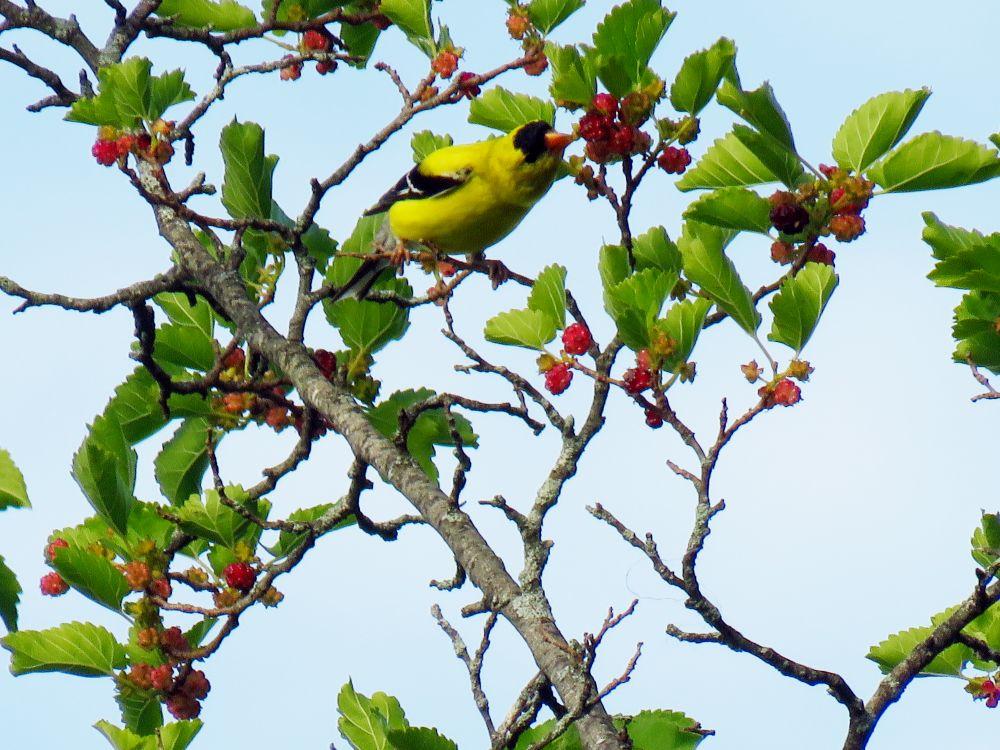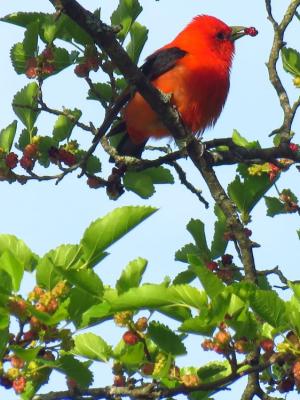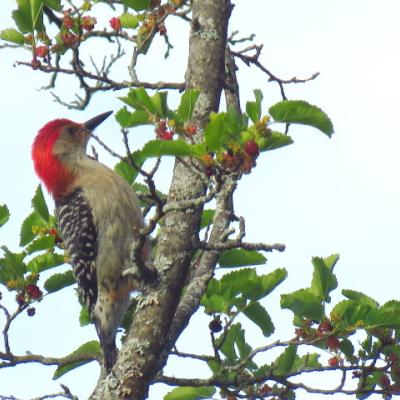Wildlife photography by Ellen Kenny
- Tags:
- Wildlife

The ripe fruits of red mulberries attract many songbirds (and more!) each June. (Photo: Ellen Kenny)
"Why did you plant mulberries?" a few folks have recently asked, after seeing the freshly-planted Mulberry saplings at the Merrimack River Outdoor Education & Conservation Area.
Local teacher and nature photographer Ellen Kenny, along with seven students from Broken Ground Elementary School, a public school in Concord, joined Forest Society Senior Director of Education Dave Anderson and Reservation Stewardship & Engagement Director Carrie Deegan — with volunteer land steward Dave Heuss — planted a total of eight young Mulberry trees at the end of April on the floodplain.
Well, for one - they are an attractive native tree well-adapted to growing along river floodplains. The last remaining mature mulberry clings tenaciously to the sandy bank of the Merrimack River at the Forest Society's floodplain property in Concord.
Second, in June, ripe fruits attract all manner of birds, squirrels, chipmunks and even foxes and bears.
Omnivores delight in the high carbohydrate diet of early summer fruits - strawberries, mulberries - will be succeeded by raspberries, blackberries, cherries and blueberries.

Carbohydrates from sugars contained in fruits fuel the high-energy demands of the nesting season activity for birds: chick rearing and foraging for fruits and insects requires more energy.
By late summmer and early autumn, the late-ripening fruits contain more lipids - fats - which help fuel long distance fall migration.
Birds and plants have co-evolved to mutually benefit: trading carbohydrates for seed distribution via fruits which birds consume and pass seeds to far-flung locations where they might germinate.

Red-bellied woodpeckers also eat fruits in addition to insects.
